
The Enchanting Black Hills National Forest
Discover the natural beauty, rich history, and endless outdoor adventures in Black Hills National Forest, South Dakota's premier destination for tourists and nature lovers.
Nestled in the southwestern corner of South Dakota, Black Hills National Forest is a haven for nature lovers and adventure seekers. This sprawling forest covers more than 1.2 million acres and offers a diverse range of activities, from hiking and camping to fishing and wildlife viewing. The landscape is a stunning mix of dense forests, rolling hills, and rugged rock formations, making it a picturesque destination at any time of the year. One of the most iconic features of Black Hills National Forest is Mount Rushmore, where the carved faces of four U.S. presidents stand as a symbol of American history. Nearby, the Crazy Horse Memorial, still under construction, aims to honor the Lakota leader and the Native American heritage of the region. For those interested in geology, the forest is home to Jewel Cave and Wind Cave, two of the longest cave systems in the world, offering guided tours that delve deep into their fascinating underground worlds. Outdoor enthusiasts will find no shortage of trails to explore, with options ranging from easy walks to challenging hikes. The forest is also a popular spot for mountain biking, horseback riding, and off-roading. In the winter, snowmobiling and cross-country skiing are favorite activities. Wildlife is abundant, and visitors may spot deer, elk, bison, and even mountain lions. The forest's lakes and streams provide excellent opportunities for fishing, kayaking, and canoeing. Beyond the natural beauty, the Black Hills area is rich in history and culture. The towns of Deadwood and Lead offer a glimpse into the region's gold rush past, with historic buildings, museums, and even old-time casinos. Events and festivals throughout the year celebrate the local heritage, making it a vibrant destination for visitors of all ages.
Local tips in Black Hills National Forest
- Visit early in the morning or late in the afternoon to avoid crowds at popular sites like Mount Rushmore.
- Check the weather forecast and plan accordingly, as conditions can change rapidly in the mountains.
- Bring a map and compass, especially if you plan to hike off the beaten path, as cell service can be unreliable.
- Don't miss the scenic drives, such as the Needles Highway and Iron Mountain Road, for breathtaking views.
- Make sure to pack plenty of water and snacks, as facilities can be sparse in some areas.
The Enchanting Black Hills National Forest
Nestled in the southwestern corner of South Dakota, Black Hills National Forest is a haven for nature lovers and adventure seekers. This sprawling forest covers more than 1.2 million acres and offers a diverse range of activities, from hiking and camping to fishing and wildlife viewing. The landscape is a stunning mix of dense forests, rolling hills, and rugged rock formations, making it a picturesque destination at any time of the year. One of the most iconic features of Black Hills National Forest is Mount Rushmore, where the carved faces of four U.S. presidents stand as a symbol of American history. Nearby, the Crazy Horse Memorial, still under construction, aims to honor the Lakota leader and the Native American heritage of the region. For those interested in geology, the forest is home to Jewel Cave and Wind Cave, two of the longest cave systems in the world, offering guided tours that delve deep into their fascinating underground worlds. Outdoor enthusiasts will find no shortage of trails to explore, with options ranging from easy walks to challenging hikes. The forest is also a popular spot for mountain biking, horseback riding, and off-roading. In the winter, snowmobiling and cross-country skiing are favorite activities. Wildlife is abundant, and visitors may spot deer, elk, bison, and even mountain lions. The forest's lakes and streams provide excellent opportunities for fishing, kayaking, and canoeing. Beyond the natural beauty, the Black Hills area is rich in history and culture. The towns of Deadwood and Lead offer a glimpse into the region's gold rush past, with historic buildings, museums, and even old-time casinos. Events and festivals throughout the year celebrate the local heritage, making it a vibrant destination for visitors of all ages.
When is the best time to go to Black Hills National Forest?
Iconic landmarks you can’t miss
Mount Rushmore National Memorial
Explore Mount Rushmore National Memorial, a monumental tribute to four U.S. presidents etched into the Black Hills of South Dakota, embodying American history and artistry.

Badlands National Park
Explore the breathtaking landscapes and rich wildlife of Badlands National Park, a stunning gem in South Dakota's natural heritage.

Custer State Park
Discover the breathtaking beauty and abundant wildlife of Custer State Park in South Dakota, a premier destination for outdoor adventures and natural wonders.

Bear Country USA
Discover North America's wildlife at Bear Country USA, a premier wildlife park in Rapid City, South Dakota, featuring bears, wolves, and more in their natural habitats.

Reptile Gardens
Explore the fascinating world of reptiles and exotic plants at Reptile Gardens, a must-visit attraction in Rapid City, South Dakota.

The Mammoth Site
Explore The Mammoth Site in Hot Springs, SD, where ancient mammoths and fascinating prehistoric history come to life for an unforgettable experience.

Crazy Horse Memorial
Explore the monumental Crazy Horse Memorial, a tribute to Native American culture and history, nestled in the scenic Black Hills of South Dakota.

1880 Train - Hill City Depot
Discover the scenic beauty of South Dakota aboard the historic 1880 Train, a unique journey through the stunning Black Hills.
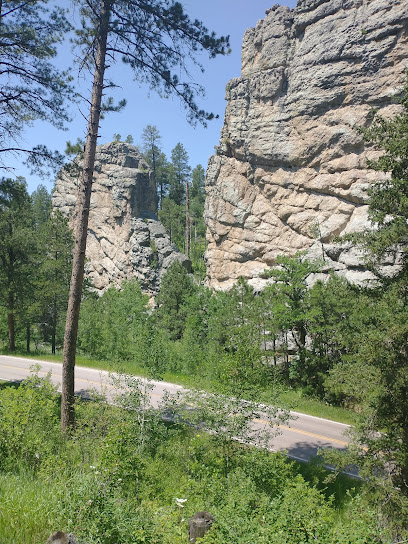
Wind Cave National Park
Explore the captivating underground wonders and stunning landscapes at Wind Cave National Park in South Dakota, a true natural gem.

Dinosaur Park
Discover the delightful Dinosaur Park in Rapid City, South Dakota, featuring life-sized dinosaur sculptures and breathtaking views of the Black Hills.
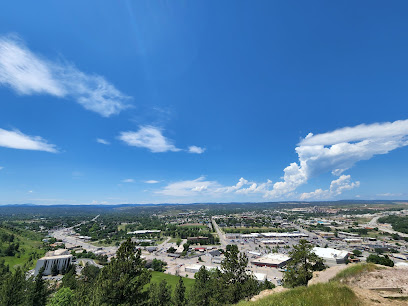
Cosmos Mystery Area
Explore the Cosmos Mystery Area in South Dakota – a captivating destination filled with optical illusions and gravitational wonders that defy belief.

Wind Cave National Park Visitor Center
Explore the natural beauty and geological wonders at Wind Cave National Park Visitor Center, your starting point for adventure in South Dakota's Black Hills.

Jewel Cave National Monument
Discover the mesmerizing beauty of Jewel Cave National Monument, a natural wonder filled with stunning formations and rich biodiversity in South Dakota.

1880 Train - Keystone Depot
Discover the enchanting journey of the 1880 Train in Keystone, South Dakota, and immerse yourself in the scenic beauty of the Black Hills.

Mount Rushmore KOA Resort at Palmer Gulch Resort
Experience the beauty of South Dakota at Mount Rushmore KOA Resort, your gateway to adventure in the Black Hills.

Unmissable attractions to see
Wind Cave National Park
Experience the breathtaking beauty of Wind Cave National Park, where unique geological wonders meet diverse wildlife in South Dakota.

Cosmos Mystery Area
Explore the mind-bending illusions and gravitational anomalies at Cosmos Mystery Area in Rapid City, a must-visit destination for curious travelers.
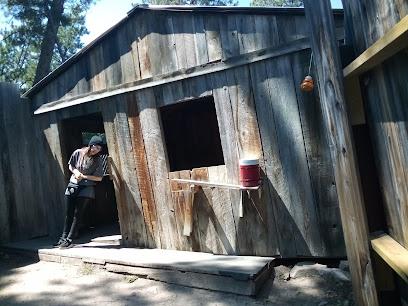
Dinosaur Park
Discover Dinosaur Park in Rapid City, SD - a unique outdoor attraction featuring life-sized dinosaur sculptures and breathtaking views of the Black Hills.

Dinosaur Museum
Explore the wonders of the Jurassic era at the Dinosaur Museum in Rapid City, SD – a must-visit for dinosaur lovers and curious minds alike.

Pactola Reservoir
Discover the stunning Pactola Reservoir in South Dakota, a perfect blend of adventure and relaxation amidst nature's beauty.

Berlin Wall
Discover the powerful history of the Berlin Wall, a symbol of resilience and freedom, through its art, memorials, and stories of a divided city.

Black Hills Playhouse
Discover the enchanting Black Hills Playhouse, where live performances and the beauty of South Dakota’s landscape meet for an unforgettable cultural experience.
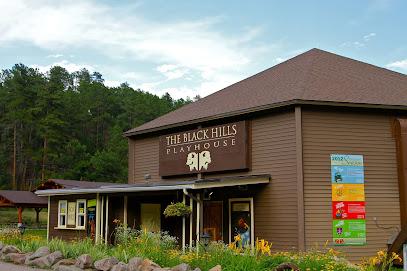
Buffalo Hunt Coaster
Experience the thrill of the Buffalo Hunt Coaster, a premier attraction in Rapid City, South Dakota, combining excitement and stunning Black Hills views.

Little Devil's Tower Trailhead
Discover the breathtaking Little Devil's Tower Trailhead in South Dakota’s Black Hills – a must-visit hiking destination for nature lovers and adventure seekers.

Black Hills Petrified Forest
Explore the ancient beauty of the Black Hills Petrified Forest, where time stands still and nature's wonders come to life in South Dakota.

Gordon Stockade Historical Landmark
Explore the rich history of the American West at Gordon Stockade Historical Landmark in Custer, South Dakota, surrounded by stunning natural beauty.

Cathedral Spires Viewing Spot
Explore the stunning Cathedral Spires Viewing Spot in Custer, SD, and immerse yourself in breathtaking views and exhilarating hiking trails amidst nature's beauty.

Mount Roosevelt Memorial
Explore the Mount Roosevelt Memorial in the Black Hills National Forest – a tribute to Theodore Roosevelt with breathtaking views and rich history.

Heddy Draw Overlook - s
Explore stunning vistas at Heddy Draw Overlook in Custer, South Dakota, a scenic gem perfect for nature lovers and photography enthusiasts.

Black Hills National Forest sign
Explore the stunning landscapes and rich wildlife of Black Hills National Forest, a paradise for outdoor adventure and natural beauty in South Dakota.

Essential places to dine
Alpine Inn
Experience cozy lodging and authentic German cuisine at Alpine Inn in Hill City – your perfect getaway in South Dakota's beautiful Black Hills.

Black Hills Sauce & Dough
Discover Black Hills Sauce & Dough: A Culinary Haven in Custer with Delicious Burgers and Unique Flavors.
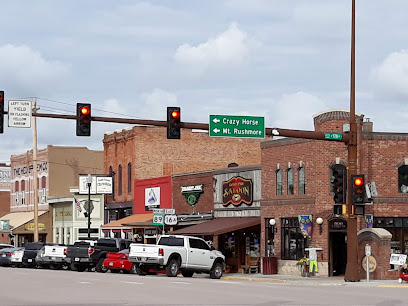
Buglin' Bull Restaurant and Sports Bar
Discover the heart of American cuisine at Buglin' Bull Restaurant and Sports Bar in Custer – where great food meets lively sports entertainment.

Powder House
Discover the perfect blend of cozy lodging and exceptional dining at Powder House Lodge in Keystone, South Dakota.

Ruby House Restaurant
Experience hearty American cuisine at Ruby House Restaurant in Keystone, SD - where family dining meets local flavor.
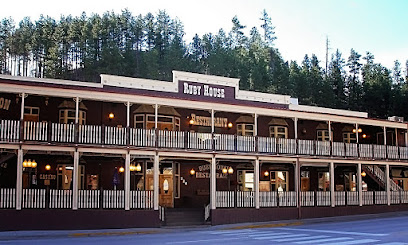
Hill City Café
Experience delightful American cuisine in a cozy setting at Hill City Café - your perfect stop in South Dakota's beautiful Black Hills.

Mt. Rushmore Brewing Company & Pounding Fathers Restaurant
Experience South Dakota's finest craft brews and hearty dishes at Mt. Rushmore Brewing Company & Pounding Fathers Restaurant in Custer.

The Custer Wolf - Food & Drink
Discover The Custer Wolf: A top-rated American restaurant & bar in Custer offering delicious food & drinks amidst stunning South Dakota landscapes.
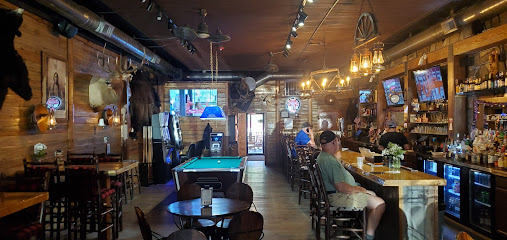
Bumpin Buffalo Bar and Grill
Discover the warmth of family dining at Bumpin Buffalo Bar and Grill in Hill City - where great food meets stunning Black Hills views.

Mangiamo Wood Fired Pizza
Experience authentic wood-fired pizza in Hill City at Mangiamo - where every bite takes you on a flavorful journey.

Cruizzers
Experience mouthwatering pizzas at Cruizzers in Keystone – the perfect dining spot after exploring South Dakota's beautiful Black Hills.

Skogen Kitchen
Discover the essence of South Dakota cuisine at Skogen Kitchen - where local ingredients meet culinary excellence in Custer.

Maria's Mexican Restaurant
Savor authentic Mexican flavors at Maria's Mexican Restaurant in Custer – where every meal is a festive celebration!

Sage Creek Grille - Now Open!
Experience authentic American cuisine at Sage Creek Grille in Custer, SD - where local flavors meet warm hospitality.

Our Place
Discover the best breakfast experience in Custer at Our Place – where delicious flavors meet warm hospitality.

Markets, malls and hidden boutiques
Mount Rushmore Gift Shop
Discover unique souvenirs and local crafts at the Mount Rushmore Gift Shop, a treasure trove for visitors of this iconic American landmark.

Jewel of the West
Explore the Jewel of the West, Hill City's premier destination for unique gifts, local crafts, and unforgettable shopping experiences in South Dakota.

TurtleTown
Discover TurtleTown in Hill City, South Dakota – a delightful candy store filled with sweets, chocolates, and gourmet treats for every palate.

Sylvan Lake General Store & Eatery
Discover the charm of Sylvan Lake General Store & Eatery—your one-stop destination for local goods, tasty bites, and outdoor adventure rentals in Custer, SD.

Halleys Store
Explore unique antiques and collectibles at Halleys Store in Keystone, SD, where history comes to life with every treasure you discover.
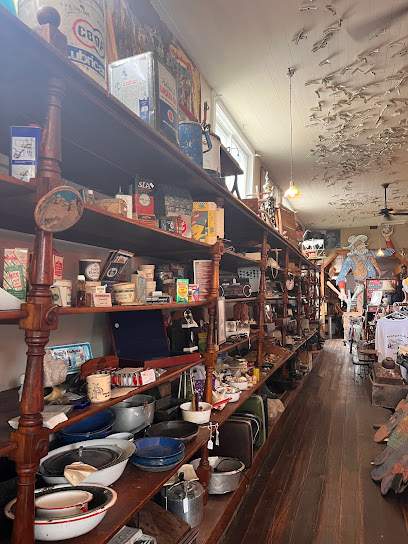
Boyds Antiques
Explore Boyds Antiques in Custer, SD for unique vintage finds and a delightful shopping experience steeped in history.
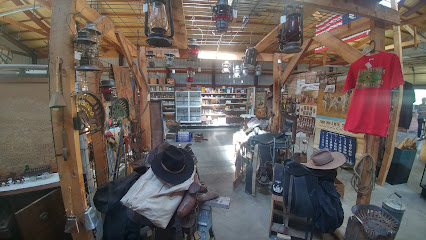
Things That Rock
Discover unique gifts and local artistry at Things That Rock, a gem in Hill City, South Dakota offering beads, jewelry, and rock specimens.

Beef jerky Experience
Discover the ultimate jerky experience in Hill City, South Dakota, with a wide variety of flavors and local snacks.

The Farmer's Daughter
Explore a charming gift shop in Hill City, SD, featuring unique handmade crafts, fabrics, and quilts from local artisans.

The Handbag Store
Explore unique handbags and accessories at The Handbag Store in Hill City, a boutique that captures the essence of style and charm in South Dakota.
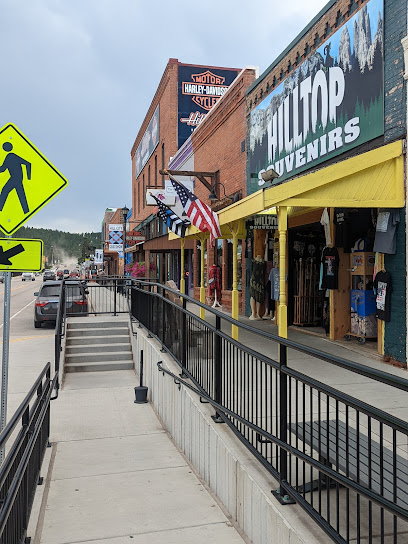
A Walk In the Woods Gallery & Gifts
Discover unique gifts and local artistry at A Walk In the Woods Gallery & Gifts in Custer, South Dakota.

Dakota Territory Trading Post
Explore the Dakota Territory Trading Post for unique antiques and a glimpse into the rich history of South Dakota, all within a charming atmosphere.

Dahl's Chainsaw Art
Explore the creative magic of Dahl's Chainsaw Art in Hill City, SD, where unique sculptures and local artistry come to life.

Black Hills Souvenirs & Gifts
Explore a diverse selection of local crafts, unique gifts, and authentic mementos at Black Hills Souvenirs & Gifts in Keystone, South Dakota.

Stage Stop
Explore Stage Stop in Custer, SD for unique gifts and souvenirs that capture the spirit of your travels through the Black Hills.

Essential bars & hidden hideouts
Alpine Inn
Experience the charm of Alpine Inn in Hill City, SD – your perfect blend of cozy accommodations and delicious dining in the heart of the Black Hills.

Buglin' Bull Restaurant and Sports Bar
Discover Buglin' Bull Restaurant and Sports Bar in Custer, SD, where classic American flavors meet a lively sports atmosphere for families and friends.
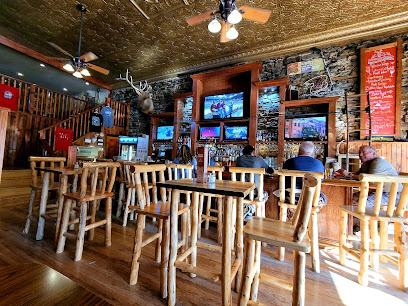
Powder House
Discover the flavors of the Black Hills at Powder House Lodge – where delicious steakhouse dining meets cozy accommodations.

Mt. Rushmore Brewing Company & Pounding Fathers Restaurant
Experience the rich flavors of South Dakota at Mt. Rushmore Brewing Company, a must-visit brewpub in Custer with craft brews and hearty American cuisine.

The Custer Wolf - Food & Drink
Experience the essence of American dining at The Custer Wolf, where flavors meet friendliness in the heart of Custer, South Dakota.

Bumpin Buffalo Bar and Grill
Experience the flavors of South Dakota at Bumpin Buffalo Bar and Grill, where family-friendly dining meets a diverse menu in the heart of Hill City.

Chute Rooster
Discover the vibrant flavors of South Dakota at Chute Rooster, a must-visit restaurant in Hill City offering a delightful dining experience.
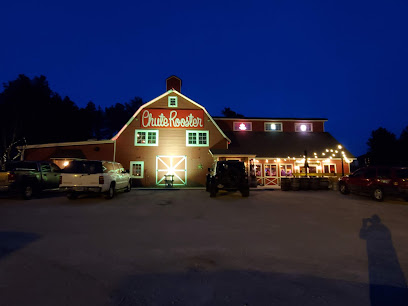
Juniper at Vertex Sky Bar
Experience breathtaking views and exquisite flavors at Juniper at Vertex Sky Bar, the ultimate rooftop destination in Rapid City, South Dakota.

Red Garter Saloon
Experience the lively atmosphere and delicious cuisine at the Red Garter Saloon in Keystone, South Dakota, where local culture meets comfort and entertainment.

Boars Nest
Discover the flavors of South Dakota at The Boars Nest, where grilled goodness meets a welcoming atmosphere.
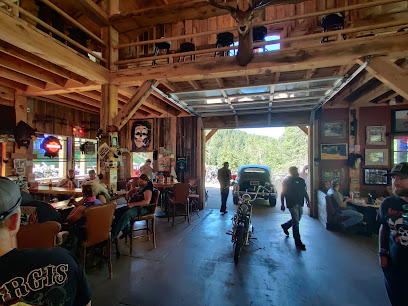
The Custer Beacon
Experience the lively atmosphere and delicious offerings at The Custer Beacon, your go-to destination for food, drinks, and live music in South Dakota.
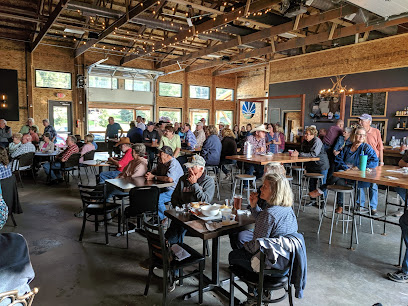
Halleys West
Experience the essence of American grill cuisine at Halleys West in Keystone, South Dakota, where every bite delights and every moment is cherished.

The Frontier Bar & Grill
Experience the heart of American dining with a cozy atmosphere and delicious cuisine at The Frontier Bar & Grill in Custer, South Dakota.

Moonshine Gulch Saloon
Discover the rustic charm and vibrant atmosphere of Moonshine Gulch Saloon, a must-visit bar and restaurant in the Black Hills of South Dakota.
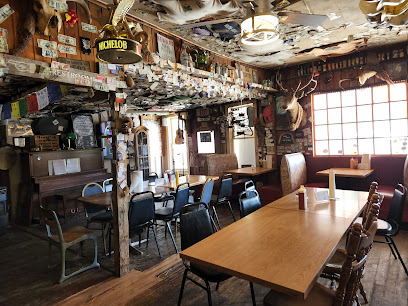
Silver Dollar Saloon
Discover the authentic Western experience at Silver Dollar Saloon in Hill City, SD, featuring local brews, hearty bites, and live entertainment.

Local Phrases about Black Hills National Forest
-
- HelloHau
[how] - GoodbyeHečha
[heh-cha] - YesEha
[eh-ha] - NoWica
[wee-cha] - Please/You're welcomeAke wanćíye
[ah-kay wahn-chee-yea] - Thank youPilámayaye
[pee-lah-mah-yah-yea] - Excuse me/SorrySičháŋčha
[see-cha-cha] - How are you?Hečha kiŋ
[heh-cha keen] - Fine. And you?Wíyayake. Aŋ kiŋ
[wee-yah-yah-kay. ahng keen] - Do you speak English?Wíyayake. Aŋ kiŋ
[wee-yah-yah-kay. ahng keen] - I don't understandWíyayake. Aŋ kiŋ
[wee-yah-yah-kay. ahng keen]
- HelloHau
-
- I'd like to see the menu, pleaseMenu kiŋ éyapi kte
[meh-noo keen ay-yah-pee kteh] - I don't eat meatWíyayake. Aŋ kiŋ
[wee-yah-yah-kay. ahng keen] - Cheers!Olowan
[oh-loh-wahn] - I would like to pay, pleaseKepay kiŋ éyapi kte
[kay-pay keen ay-yah-pee kteh]
- I'd like to see the menu, pleaseMenu kiŋ éyapi kte
-
- Help!Awe
[ah-way] - Go away!Wíyayake. Aŋ kiŋ
[wee-yah-yah-kay. ahng keen] - Call the Police!Wíyayake. Aŋ kiŋ
[wee-yah-yah-kay. ahng keen] - Call a doctor!Wíyayake. Aŋ kiŋ
[wee-yah-yah-kay. ahng keen] - I'm lostWíyayake. Aŋ kiŋ
[wee-yah-yah-kay. ahng keen] - I'm illWíyayake. Aŋ kiŋ
[wee-yah-yah-kay. ahng keen]
- Help!Awe
-
- I'd like to buy...Iyápi kiŋ éyapi kte
[ee-yah-pee keen ay-yah-pee kteh] - I'm just lookingWíyayake. Aŋ kiŋ
[wee-yah-yah-kay. ahng keen] - How much is it?Hehan kte
[heh-hahn kteh] - That's too expensiveKte héčha kiŋ
[kteh heh-cha keen] - Can you lower the price?Hehan kte
[heh-hahn kteh]
- I'd like to buy...Iyápi kiŋ éyapi kte
-
- What time is it?Hehan kte
[heh-hahn kteh] - It's one o'clockKičízapi
[kee-chee-zah-pee] - Half past (10)Kiśóta
[kee-shoh-dah] - MorningWóiyawa
[woh-yah-wah] - AfternoonWóiyawa
[woh-yah-wah] - EveningWóiyawa
[woh-yah-wah] - YesterdayHéčtu weláka
[heh-ch-too way-lah-kah] - TodayLíla ožáŋ
[lee-lah oh-zah-ng] - TomorrowWíyawa
[wee-yah-wah] - 1Nuŋpá
[noon-pah] - 2Šúŋkawakáŋ
[shoon-kah-wah-kahng] - 3Thóŋthuŋwaŋ
[thohng-thoon-wahng] - 4Zaptáŋ
[zahp-tahng] - 5Šákpe
[shah-kpeh] - 6Šákpe
[shah-kpeh] - 7Šákpe
[shah-kpeh] - 8Šákpe
[shah-kpeh] - 9Šákpe
[shah-kpeh] - 10Wíyawa
[wee-yah-wah]
- What time is it?Hehan kte
-
- Where's a/the...?Taku kiŋ
[tah-koo keen] - What's the address?Hehan kte
[heh-hahn kteh] - Can you show me (on the map)?Naháŋ kiŋ
[nah-hahng keen] - When's the next (bus)?Hehan kte
[heh-hahn kteh] - A ticket (to ....)Taku kiŋ
[tah-koo keen]
- Where's a/the...?Taku kiŋ
History of Black Hills National Forest
-
The Black Hills, known as 'Pahá Sápa' by the Lakota Sioux, were formed over 1.8 billion years ago. This geological marvel was created through a combination of volcanic activity and the uplift of ancient rock, which has resulted in the unique rugged terrain and rich mineral deposits found throughout the region.
-
The Black Hills hold a profound spiritual significance for the Lakota Sioux, who have inhabited the region for centuries. They consider the Black Hills to be the center of their universe and a sacred place where they connect with their ancestral spirits. The Lakota creation story is deeply intertwined with the landscape, particularly with Bear Butte, a site of pilgrimage and vision quests.
-
In 1874, Lieutenant Colonel George Armstrong Custer led an expedition into the Black Hills, which was then part of the Great Sioux Reservation according to the Treaty of Fort Laramie. This expedition, which included over a thousand men, discovered gold in the Black Hills, igniting a gold rush and leading to increased conflict between the United States government and the Lakota Sioux.
-
The discovery of gold in the Black Hills led to the Great Sioux War, also known as the Black Hills War. The U.S. government, eager to access the gold-rich lands, pressured the Lakota to sell the Black Hills. When they refused, conflict ensued. Notable battles include the Battle of the Little Bighorn, where the Lakota and their allies defeated Custer's forces. Ultimately, the U.S. government seized the Black Hills, a loss that remains a point of contention for the Lakota people.
-
In 1897, President William McKinley established the Black Hills Forest Reserve to protect the unique environment and resources of the area. This designation was later changed to Black Hills National Forest, encompassing over 1.2 million acres. The forest is managed for multiple uses, including recreation, wildlife habitat, and timber production.
-
One of the most iconic landmarks within the Black Hills is Mount Rushmore. Carved into the granite face of the mountain between 1927 and 1941 by Gutzon Borglum and his son Lincoln, the monument features the 60-foot heads of Presidents George Washington, Thomas Jefferson, Theodore Roosevelt, and Abraham Lincoln. It symbolizes the birth, growth, development, and preservation of the United States.
-
Located near Mount Rushmore, the Crazy Horse Memorial is a monumental sculpture dedicated to the Lakota leader Crazy Horse. Sculptor Korczak Ziolkowski began work on the memorial in 1948, and it remains a work in progress. Once completed, it will be the largest sculpture in the world, representing the enduring spirit and cultural heritage of Native Americans.
Black Hills National Forest Essentials
-
The Black Hills National Forest is located in western South Dakota. The nearest major airport is Rapid City Regional Airport, approximately 50 miles away. From Rapid City, you can rent a car or take a shuttle service to the forest. If you're driving, you can access the forest via Interstate 90, which runs east-west through South Dakota, and then take U.S. Highway 16 or Highway 385 into the Black Hills.
-
Once in the Black Hills, the best way to get around is by car. Car rentals are available at Rapid City Regional Airport and in Rapid City itself. There are also some local shuttle services and tour operators that can take you to key attractions. However, public transportation within the forest is limited, so having your own vehicle offers the most flexibility for exploring the area.
-
The official currency is the United States Dollar (USD). Credit and debit cards are widely accepted in hotels, restaurants, and shops, but it's advisable to carry some cash for smaller establishments or when venturing into more remote areas. ATMs are available in Rapid City and larger towns within the Black Hills.
-
The Black Hills is generally a safe destination for tourists. However, like any travel destination, it's important to take standard precautions. Avoid leaving valuables in plain sight in your vehicle, and be aware of your surroundings, especially in crowded tourist spots. While there are no specific high-crime areas targeting tourists, always stay vigilant and follow local advice.
-
In case of an emergency, dial 911 for immediate assistance. There are medical facilities in Rapid City and in some larger towns within the Black Hills. It's highly recommended to have travel insurance that covers medical emergencies. For minor health issues, there are pharmacies in Rapid City and other larger towns.
-
Fashion: Do wear comfortable and weather-appropriate clothing, especially hiking boots if you plan to explore trails. Don't wear flip-flops or open-toed shoes on rugged terrain. Religion: Do respect local customs and any religious sites you visit. Public Transport: Do be respectful if using local shuttle services; tipping drivers is appreciated. Greetings: Do greet people with a friendly smile and a handshake. Eating & Drinking: Do try local specialties and always be polite to service staff. Don't litter; always dispose of your trash properly to keep the forest clean.
-
To experience the Black Hills like a local, take time to explore some of the less-visited areas, such as the Spearfish Canyon Scenic Byway or hiking trails in Custer State Park. Engage with locals at small diners and shops in towns like Hill City or Custer. Don't miss out on local events and festivals, which can offer a unique glimpse into the area's culture and history.
Trending Landmarks in Black Hills National Forest
-
Mount Rushmore National Memorial
-
Badlands National Park
-
Custer State Park
-
Bear Country USA
-
Reptile Gardens
-
The Mammoth Site
-
Crazy Horse Memorial
-
1880 Train - Hill City Depot
-
Wind Cave National Park
-
Dinosaur Park
-
Cosmos Mystery Area
-
Wind Cave National Park Visitor Center
-
Jewel Cave National Monument
-
1880 Train - Keystone Depot
-
Mount Rushmore KOA Resort at Palmer Gulch Resort
Nearby Cities to Black Hills National Forest
-
Things To Do in Mount Rushmore
-
Things To Do in Rapid City
-
Things To Do in Deadwood
-
Things To Do in Gillette
-
Things To Do in Pierre
-
Things To Do in Sheridan
-
Things To Do in Cheyenne
-
Things To Do in Laramie
-
Things To Do in Dickinson
-
Things To Do in Sterling
-
Things To Do in Fort Collins
-
Things To Do in Mandan
-
Things To Do in North Platte
-
Things To Do in Bismarck
-
Things To Do in Riverton













